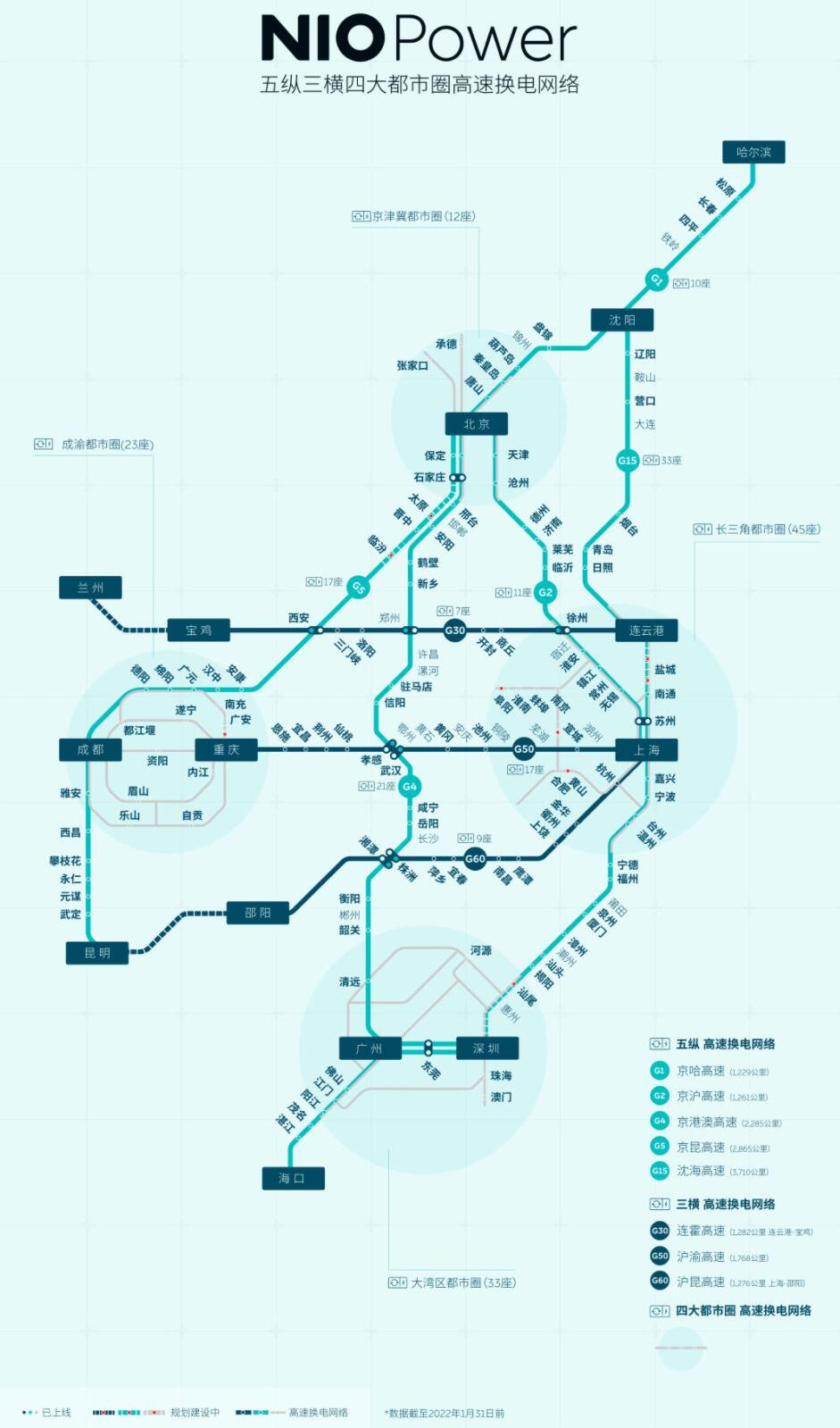Nio said 10 of the planned battery swap stations did not come online as planned, and they will be available by May.
Although Nio has already exceeded the planned number of battery swap stations along highways that it announced last September, it has delayed a broader plan.
Nio announced on September 21 last year that it would complete its battery swap network covering eight major highways and four densely populated metropolitan areas by the Chinese New Year holiday of 2022 which falls on January 31.
At the time, the company had 99 battery swap stations covering highways, and it planned to increase them to 169 by the holiday.
Nio's figures released today showed that as of January 28, it had 828 battery swap stations in China, 220 of which are located along highways.
That number far exceeds the target Nio announced last year, but it apologized to users in a statement posted on its app and said that its plan to build a battery swap network covering eight major highways and four densely populated metropolitan areas was only 94 percent complete.
Information released by Nio showed that 10 highway service areas did not see battery swap stations come online as planned.
The company said that some of these were due to local power usage restrictions during the winter months, which prevented the battery swap stations that had been built from receiving power as planned. Another portion of the stations were delayed due to the impact of Covid-19 prevention, including contracting, transportation and construction.
These stations are expected to be completed and operational by May, Nio said.
Between January 28 and February 8, Nio will offer customers the right to use State Grid charging piles for free in the service areas that would otherwise see battery swap stations available.
The company will also provide additional mobile charging vehicles in busy service areas and offer free charging 7*24 during this period.
The vast majority of Nio's battery swap stations located in highway service areas will provide 7*24-hour service from January 28 to February 8, with a few stations closing for night service depending on actual demand.

